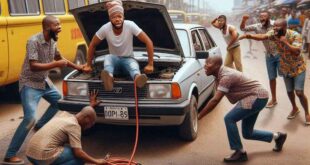A vehicle’s kickstarter is the part of a car system responsible for initiating the engine ignition which starts the running of the car. Kickstarter problems arise unexpectedly and for more than one reason. Whenever there’s corroded terminals, loose connections, a bad, worn out or damaged system component you’ll notice. Starting your car becomes more difficult, or it simply refuses to start. Unfortunately, you won’t see the source of the problem when all of a sudden the system fails. And repeatedly turning the ignition key, hoping that eventually the engine will fire up when it refuses to start, doesn’t always help. Most often, it creates more problems.
Fortunately, common kickstarter system problems happen in predictable places. And you have at your disposal more than one strategy to help you check the system in your car. Whether it is lack of power, a bad electrical connection, or a bad starter component, use these five troubleshooting tips to fire up your engine again. Begin with one of the most common sources of engine starting problems.
Check The Battery Voltage

You need to know whether you have enough juice to operate the starter motor by measuring the amount of voltage in your battery using a voltmeter. With a reading of 12.4V or less on a three to four years old battery, it’s a good idea to hydrometer-check your battery. The hydrometer is a simple tool that lets you know the state of charge and health of your battery. So you’ll know whether one or more cells have failed.
Inspect Cables And Wires

Corrosion around battery terminals prevents electrical flow. This is a common problem on a battery or starter system that hasn’t received much attention. If you notice a layer of corrosion around one or both battery terminals, clean them with a solution of baking soda and warm water. You can order a well formulated battery terminal cleaner here
Inspect The Starter Solenoid

A starter solenoid comes in different shapes based on vehicle brands but they all do pretty much the same thing, crank an ignition. Check the connections at the starter solenoid (the small cylinder on top of the starter) or starter relay. Most Ford vehicles use a remote starter relay instead of a solenoid. The positive (red) battery cable connects directly to the solenoid or starter relay. Can’t find the relay? Consult the vehicle repair manual for your particular car make and model. If the solenoid or relay fails, the car won’t start. Check for dirty, loose, disconnected or broken wires that will prevent electrical current from reaching the motor. If the wires and connections are in good condition, the starter motor, solenoid or relay have failed, and you need to replace it.
Check The Starter Motor
Depending on your particular vehicle model you may need to raise the front of the car or remove the intake manifold or some other component to reach the starter motor. Consult the car repair manual for your particular model, if necessary. Watch the video below to get a visual reference of the trouble points you want to pay attention to.
Inspect The Engine Flywheel

If you removed the starter motor for inspection, this is a good chance to check the flywheel as well. The flywheel is the large, heavy wheel between the engine and transmission. This is the wheel that the starter pinion gear engages to crank the engine. Once you’ve removed the starter motor, set your transmission to Neutral.
Have an assistant rotate the crankshaft by turning the center bolt on the crankshaft pulley using a ratchet or breaker bar and a socket. You’ll find this pulley at the front and bottom of the engine block. This pulley rotates the drive or serpentine belt to run the alternator, steering pump and other components. Depending on your vehicle model, you may need to remove a wheel to gain access to the pulley center bolt.
Watch the flywheel as it rotates and make sure the teeth are in good condition. Missing or damaged teeth will prevent the starter motor from cranking the engine. Replace the flywheel, if necessary.
When you face car starter problems, remember that lack of proper battery maintenance, faulty electrical connections and components will prevent your starting system from working properly. Whatever the source of the problem, these troubleshooting tips will help you when your car won’t start. They’ll provide you with a relatively quick way to solve your starter problems.
 Spot Dem Everything About Cars
Spot Dem Everything About Cars







Most of the times the car fails to start because of the problem with the battery. It is therefore important to have a battery hydrometer to regularly check the health of your lead acid battery to avoid inconveniences brought by a problematic car battery.